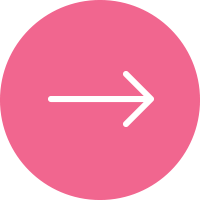ROLE
UX Reseracher Lab Assistant
WHAT I DID
-
Conduct User Feedback Interviews
-
Material Market Research
ABOUT Mood.Cloud
Mood.cloud is an art installation in Gates Hall measures collective emotion in lighting. Learn more here.
DOWNLAODS
Material Price Comparison here
Fall 2014
HOW DOES IT WORK?
Here is how it works. An iPad touchscreen shows a collection of images that correspond to emotions, such as cuddly kittens or serene landscapes. You tap on the image that best captures your mood. An algorithm then translates it to a color, which is displayed in an LED light string from a suspended acrylic sculpture. Feeling happy? Tap on the smiley face and your string lights up yellow. Feeling blue? Tap on a rainy photo, it turns dark blue or black. Up to 24 people at a time can enter an image, turning the mood cloud into a “mood crowd” that captures collective emotions across an array of 16 colors. But Professor Geri Gay says the applications for the research in capturing sentiment are much broader. For instance, it could also incorporate Twitter feeds “to capture the mood of the world.”
The hanging sculpture was designed by visiting Korean artist, Younghui Kim, a specialist in new media art. Its installation was a collaborative effort involving Cornell artists, computer programmers, social scientists and environmental architects. Gay says, “This project exemplifies the interdisciplinary nature of CIS, and is a perfect example of the way people work today, by bringing together various talents and disciplines.”
While the “mood cloud” is an artistic creation, it is based on research with broad relevance in other areas, such as healthcare. The cloud uses Photographic Affect Meter technology, or PAM, which was developed at Cornell to measure psychological affect and mood. This innovation is now being used in Mood Rhythm, a smartphone app that helps bipolar patients track their daily fluctuations in mood.
Although the first “cloud” installation will be used to capture emotion, it offers the potential to track many different kinds of input. And it could yield intriguing observations about the emotional life of Cornelians. If it’s a rainy day, will the collective mood be gloomy, turning the cloud dark? Will it turn a stressed-out red during finals week? Or a happy yellow the day before spring break? Visit the Gates Hall atrium to find out.
Interactive Installation:
Mood.Cloud
During my time as a lab assistant at the Cornell Interaction Design Lab, one of my projects was to collect feedback on the cloud-shaped interactive installation and hence provide insights into future improvement. I was assigned to conduct user feedback interviews on how they felt about the mood.cloud installation and transcribe from the audio files. I was also asked to conduct price comparisons for the materials.
Here is a brief intro of what it is: Mood.Cloud was developed and constructed by Cornell’s Interaction Design Lab (IDL), and is headed up by Information Science Professor Geri Gay and postdoctoral researcher Lindsay Reynolds1. The hanging sculpture was designed by visiting Korean artist, Younghui Kim, a specialist in new media art1. The goal of the research is to measure mood and emotions using light. To put in Professor Geri’s words, it is a to create “data as art.”
Some More Insights
PREV
CHI 2015: Think Tank Glasses
NEXT
CUApp Design Challenge: Rubato

